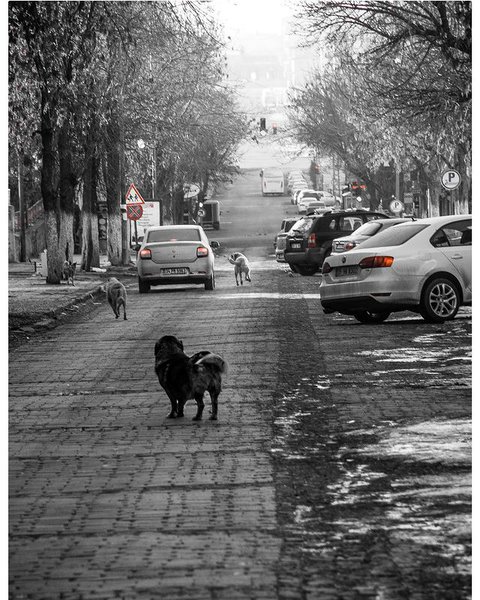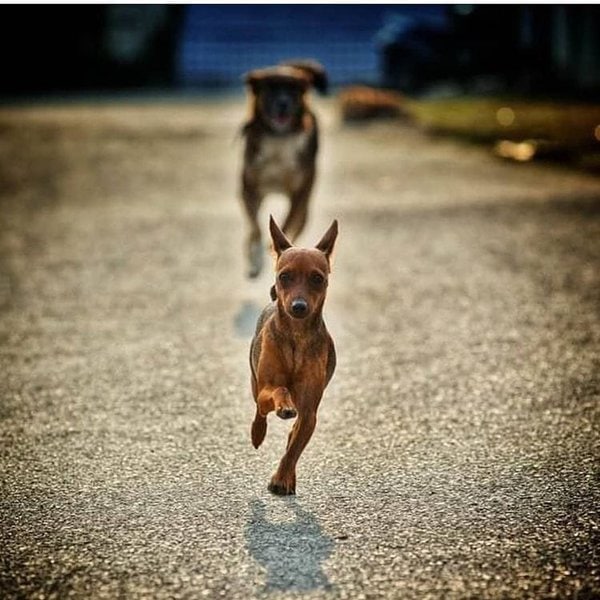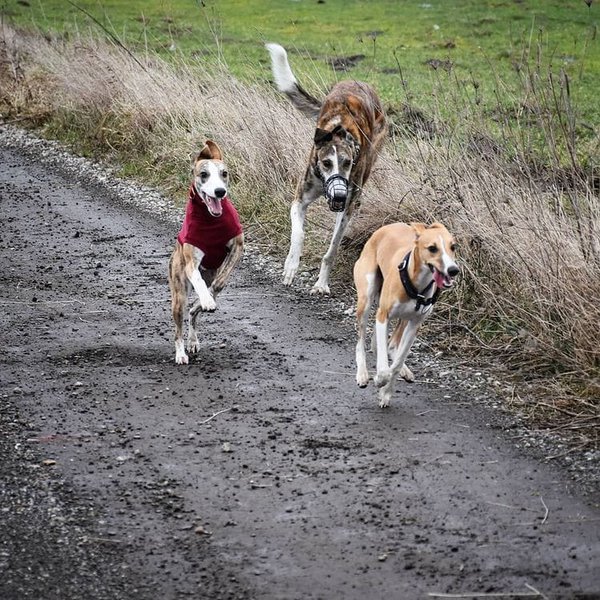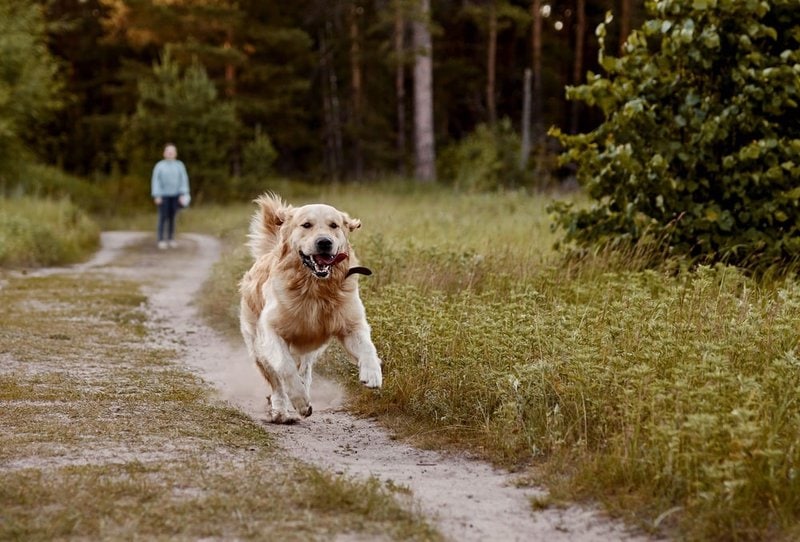Dogs love any excuse to run and play. Whether it is chasing you around the house demanding playtime or running after some random squirrel in the neighborhood, it is, without a doubt, one of their favorite hobbies.
If you notice that your dog is chasing cars around the neighborhood, you can rest assured that it is a completely normal habit that many dogs have. The most common reason why dogs do this is out of pure instinct.
We shall take a closer look at this and other reasons why your dog loves to chase after cars. You will also learn why it is not always safe to let your pooch do this as well as how to put an end to the habit.
Why Does My Dog Love Chasing Cars?

To put it simply, dogs love chasing cars because they love chasing things in general. For the most part, it is a purely innocent habit that may have numerous underlying triggers. Here are some of the most common of these reasons.
Playfulness
If your dog is the kind to get easily excited by fast-moving objects, then they might be chasing cars for entertainment. Dogs, in this case, will perceive the moving vehicle in the same way that they would a rolling ball or their favorite toy being thrown across the room for them to retrieve.
Curiosity
If your dog is not used to seeing cars, then they might want to give chase out of curiosity. This is especially common with indoor dogs or dogs bred in the countryside, where there isn’t much traffic around the home.
Predator Instincts
Prey drive is an instinct that most dogs have. They inherited it from their wild ancestors that survived by hunting other animals. The instinct is stronger in some dog breeds than others and is especially common in herding breeds, hunting breeds, and in some guard dog breeds.
With these dogs, they view the moving car as prey for them to stalk and capture and will often commit to chasing the car for way longer than those doing it out of curiosity or boredom.
Territorialism
Your dog may also chase cars in the neighborhood as a way to drive them away from what the pooch considers their territory. You may notice that your dog gets aggressive when cars pass by and may menacingly bark as they chase the car.
This will typically not be an isolated incident, and you will notice your dog marking and defending their territory in other ways. This could be anything from marking your property with urine to being hostile against other pets in your home or the neighborhood.
Separation Anxiety
If your dog only chases your car, the chances are that they are doing it to avoid being separated from you. Separation anxiety is a relatively common issue with dogs, especially if they have a traumatic past or were separated from their litter when they were too young.
Should I Let My Dog Chase Cars?

While most reasons why your dog chases cars are innocent, it is not always a good idea to allow the habit to persist. There are two major risks you have to be concerned about:
Injuries
The first is the risk of injury to the dog. This is the case particularly on busy roads where the dog could very easily get run over by other fast-moving cars.
It could also happen on small, private roads, especially if the driver of the vehicle being chased changes directions without noticing the pursuing pooch. A common scenario here is that of dogs getting run over by cars as they reverse into drive-ways or car garages.
Getting Lost
When your dog decides to chase after a car that got their attention, they will most likely focus all their attention on the vehicle. This makes it very easy for them to get disoriented, especially if they chase the car for long distances.
A lot of dogs end up lost this way as they find themselves in unfamiliar surroundings. They may end up hiding for safety which makes it even harder to find them.
How Can I Stop My Dog From Chasing Cars?
If you want to protect your dog from the risks of chasing cars, there is a lot you can do, including restricting their movements and training them to control their impulses. Below are some of the most useful strategies if you want to put an end to this habit permanently.
Get Them Used To Be Around Cars
If your dog is used to seeing and being around cars, they are not likely to get as excited about them if their chasing habit was, as a result of pure curiosity.
Getting your dog used to cars could be as simple as taking them on frequent car rides or even taking daily walks on routes with moderate traffic.
Correction Collars
Correction collars use responses like static or beeping to warn the dog to stop doing what they are doing. These collars can also come in handy when it comes to stopping your dog’s habit of chasing cars.
You could invest in a correction collar that comes with a range limit. These are typically triggered when the dog exceeds a certain distance from the receiver.

Doggy-Proof Fencing
A fence is perhaps the best compromise when it comes to giving your dog freedom to explore the outdoors while also protecting them from themselves. Just make sure that the fence is dog-proof in that they cannot easily hop over it and put themselves in danger chasing cars.
Keep Your Dog On A Leash While Outdoors
Another way to let your dog enjoy the outdoors while protecting them from the risks involved in chasing cars is using a leash. This applies whether you are out on a walk or your dog is just hanging out unsupervised in the yard.
Obedience And Impulse Control Training
When it comes to dealing with your dog chasing cars out of instinct, obedience and impulse-control training are your best strategies. This is particularly important with herding dog breeds and hunting dog breeds that are more likely to display the habit.
It could help to enlist the help of a dog-training professional here as this kind of training requires a lot of time and patience as well as the use of specific skills for better results.
Engage Your Dog Physically
If your dog is chasing cars out of boredom, it could help to give them something else to focus their playful energy on.
Ensure that your dog gets the recommended amount of physical exercise in a day for its age and breed. For some, this may be as little as 30 minutes in a day, while other breeds require up to 2 hours of exercise every day.





